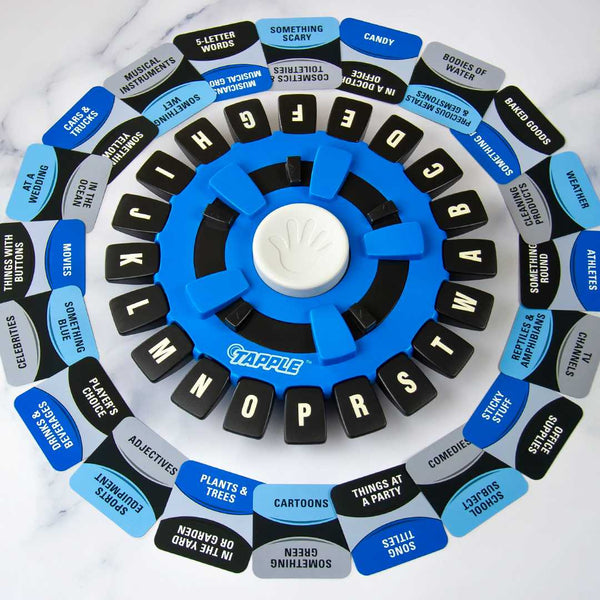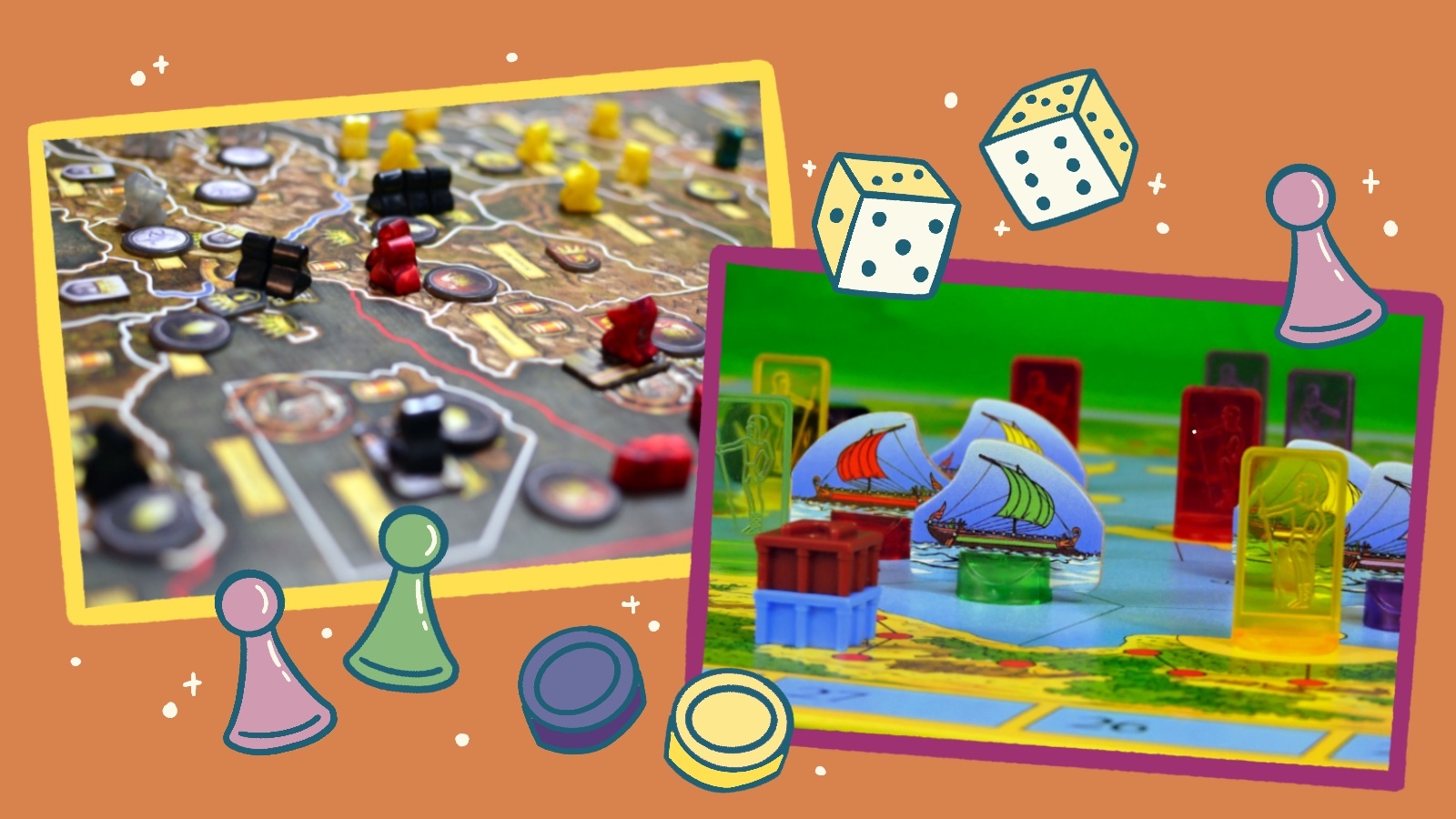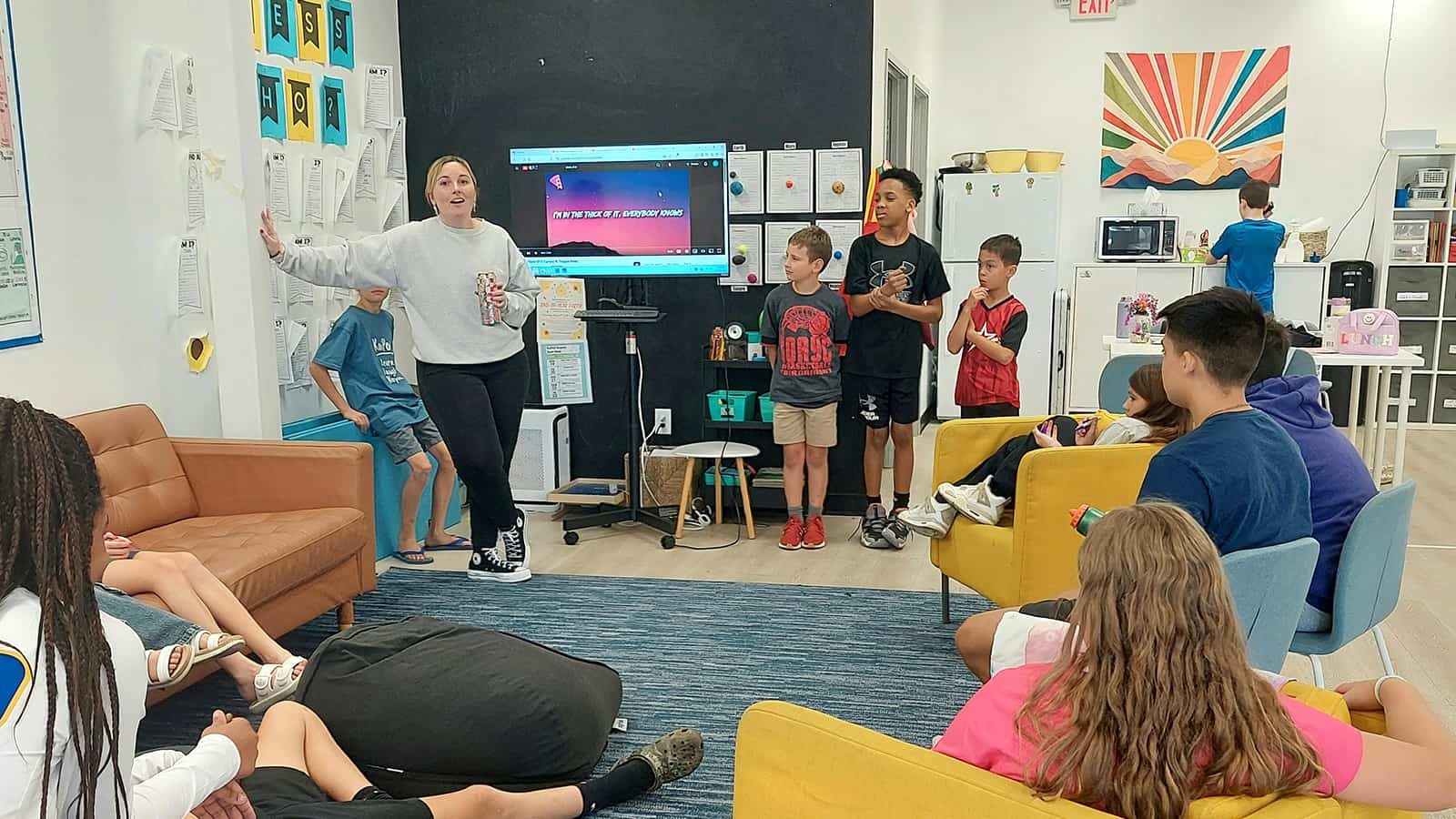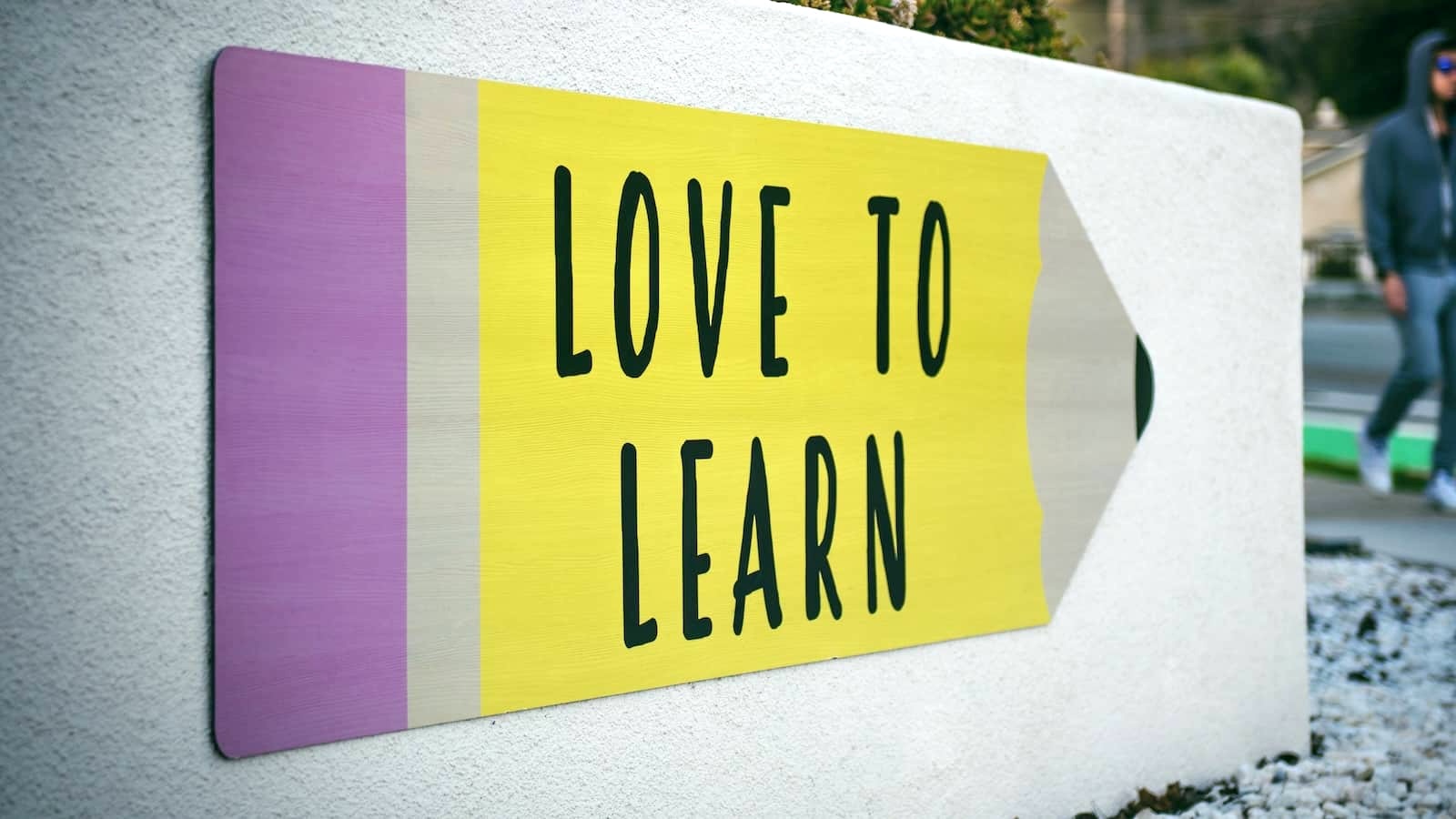By their very nature, all board games can be educational. Most involve counting, logical reasoning, and strategy, and some encourage cooperation and ingenuity too. All of them teach social emotional skills like being a gracious winner or good loser, playing fair, following rules, and more. That said, some games are a little more educational than others. These are our favorite educational board games for Microschool classrooms, in a variety of subjects
.
Early Education Board Games
First Orchard
Preschoolers love this cute cooperative game, which teaches colors and counting. Roll the die and try to fill your basket with fruit from each tree. But watch out for the pesky raven, who’s waiting to grab your healthy snacks!
Sequence for Kids
This is a bit like Bingo, but everyone plays on the same board. The goal is to get four of your own chips in a row by drawing and playing cards strategically. Older kids who like this game will want to check out the original Sequence too.
Snug as a Bug in a Rug
Help the bugs hide under the rug by spinning the spinner and sliding them partially under the board. Players work together to get all the colored bugs under the rug before three stink bugs spoil all the fun.:strip_icc()/pic1467087.jpg)
HiHo! Cherry-O
Here’s a classic counting game, updated a bit for today’s kids. The newest version includes cherries, blueberries, and red and green apples. Be the first to pick all the fruit from your tree to win!
Zingo!
This fun twist on Bingo helps build pre-reading skills with cards that have both words and pictures. This means kids of multiple ages can play together too. Your only problem might be choosing who gets to run the Zinger card dispenser!
STEM Board Games
Yahtzee
This beloved dice game helps kids practice addition and multiplication as they figure out their scores from each roll. They’ll also learn to strategize and plan ahead to maximize their points.
Mastermind
Kids (and adults) have been playing this classic code-breaking game in and out of classrooms for years. The concept is simple, but every game is different, and players need to use all their logic to figure out the solution.
Periodic
Your students will love this fun way to discover the elements of the periodic table. Collect sets and use energy to move across the board, learning about general chemistry concepts along the way.
Cytosis
Shrink yourself down to play this game that takes place inside human cells. This educational board game teaches players about all sorts of concepts related to cells, like organelles, mRNA, and more.
Paleo
Play cooperatively to survive a Stone Age adventure, exploring your surroundings and completing a cave painting as you go. Learn about wildlife, food, and dangers of this fascinating era.
Prime Climb
This is one of those educational board games for the classroom that’s so fun kids won’t realize they’re building key math skills like multiplication, division, factors, and more.
Ecosystem
A successful ecosystem requires a precise balance of environment and wildlife, with careful management of resources. Build a biodiverse environment to earn the most points and win this eco-minded board game.
Solarquest
Think of this kind of like Monopoly in space! Raise money and build colonies among the planets of the solar system, all while avoiding the many dangers of space travel.
:strip_icc()/pic965361.jpg)
ELA Board Games
Scrabble and Scrabble Jr.
The classic word-building game is a terrific way to work on vocabulary and spelling while encouraging strategic thinking. Scrabble Jr. includes a double-sided board that helps kids learn the basic concepts; you can also play on a blank board that awards one point for each letter you use. Both are perfect educational games for the Microschool classroom.
Upwords
In this clever twist on Scrabble, players can stack letters on top of each other to change existing words as they build new ones. This one minor change brings new life to a beloved game and might make it even better than the original!

Boggle and Boggle Jr.
Shake up the letter dice, set the timer, and challenge kids to find as many words made up of connecting letters as possible. In Boggle Jr., players match letter dice to three and four-word cards instead. They both build spelling and vocab skills.
Bananagrams
It’s like Scrabble on the go! No board needed; just spell interlocking words anywhere you have a flat surface. Plus, there’s no need to keep score: the goal is to be the first to use all your letter tiles. Simple, fun–and educational too.
Tapple
This is a terrific vocabulary builder! Pull a category card and start the timer. Each player has 10 seconds to name a word that fits the category and starts with an available letter. As each letter is used, the player taps it to show it’s out of play. Can’t come up with a word in time? You’re out, and the last player standing is the winner. (Like this game? You’ll love Scattergories too.)

Wordplay
Wordplay is a bit like Tapple or Scattergories, with an extra level of complexity. Players must come up with a word that fits a category, but here’s the twist: they’ll have to find a word that starts with a specific letter and includes another letter! For instance, think of a word related to travel that starts with “P” and includes “O.” (Passport!)
Quiddler
Be the first in each round to use all the cards in your hand to spell out words, with no letters left over. In each round, players receive more cards, increasing the challenge as you play. You can earn bonuses by making the most words or the longest word, so you’ll need to use some strategy too.
Dixit
Encourage creativity with this popular storytelling game. One player chooses a card and tells a one-sentence story to describe it, and others play cards from their own hands to match. Mix up the cards and see which one is the best fit. This game is more about imagination and inspiration than competition, and you can use the cards for a variety of writing and storytelling activities in the classroom.
History, Geography, and More Educational Board Games
Trekking Through History
Explore historical eras and learn more about the people and events that made them significant with this time-traveling adventure. Earn points by traveling chronologically while visiting as many events and people as you can. Each of the beautifully illustrated cards offers details that will intrigue young learners. (Be sure to check out Trekking the National Parks and Trekking the World too.)
Chronology
While remembering exact dates might not be incredibly important, it is helpful to know where events fit into a timeline overall. This helps students understand cause and effect, consequences of actions, and more. In this simple game, players try to build a set of events in chronological order by slotting each card into the correct place. When they get one right, they keep the card, and the first to 10 wins.
Herstory
Empower female voices with a game that highlights important women in history. You’ll find well-known figures like Amelia Earhart and Jane Goodall alongside lesser-known names like mountain climber Junko Tabei and ballerina Maria Tallchief.
The World Game
There are lots of ways to play with these fascinating cards that feature key facts about every country. Compare statistics, guess flags or capitals, and explore specific regions on the map board.
Election Night!
Teach concepts like the electoral college, campaigning, and more to help students understand the U.S. election system. This exciting game also builds math skills and can be differentiated for various ages and skill levels.
Team-Building and Cooperative Board Games
Dinosaur Escape
A volcano is exploding, and you have to get all the dinosaurs to safety! Work with fellow players to move the dinos around the board, remembering which fern token to flip to rescue each one. This no-reading game is terrific for preschoolers to play together.:strip_icc()/pic2464673.jpg)
Feed the Woozle
Working together, players feed the Woozle (a not-so-scary monster) a total of 12 snacks. To get them in his mouth, they have to follow some zany instructions though, like walking backward or spinning in circles. This game is a fun team builder, especially in Microschool classrooms of mixed ages.
Outfoxed!
This game shows up on “best of” lists everywhere, beloved for both its cooperative structure and deductive reasoning gameplay. It’s kind of like Clue for the younger set, but older kids really enjoy this one too.
Cranium
Players work in teams to gather cards from each of four categories. The wonderful thing about this game is the way it celebrates all sorts of intelligences, from creativity and word skills to math, logic, and kinesthetic awareness.
Forbidden Island
Forbidden Island is loaded with treasure–but it’s also sinking, tile card by tile card. Work together to find the treasures and make it to the helicopter landing to escape before the island disappears beneath the waves. Bonus: This game is different every time you play, since the card layout varies each time.

Mysterium
In this unique cooperative game, one player is the ghost who can only communicate through the game’s cards. They offer clues to the rest of the players, who must solve the murder mystery together. It’s a unique twist on Clue, and one that encourages deductive reasoning, logic, and teamwork.
Totem
If you want to foster a sense of openness among your students, try this interesting game in your Microschool classroom. Players take turns choosing cards to describe each other’s positive traits, building self-esteem, interpersonal relationships, and SEL skills like empathy and compassion.


